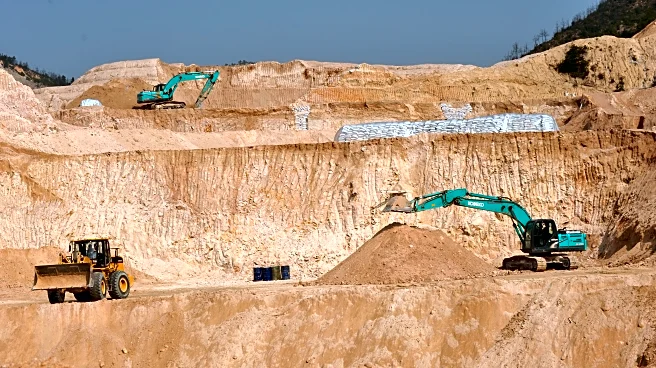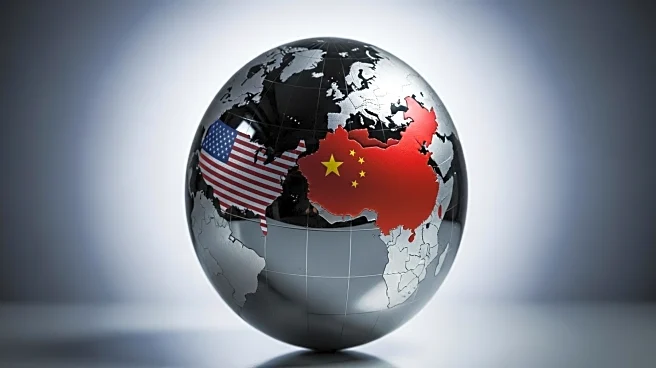What is the story about?
What's Happening?
On October 9, 2025, China announced a significant expansion of its export controls on rare earth elements, adding five more metals to its restricted list. This move increases the total number of controlled rare earths to 12 out of 17, affecting global supply chains. The new regulations also impose licensing requirements on rare-earth refining technologies and magnets, extending China's control over the supply chain. The timing of this announcement coincides with an upcoming meeting between President Trump and China's President Xi Jinping, suggesting strategic leverage in trade negotiations. Rare earths are crucial for high-tech and defense products, and China dominates the global supply, mining 60% and processing 90% of these elements.
Why It's Important?
China's rare earth export controls have significant implications for the global tech industry, particularly in the U.S., which relies heavily on these materials for manufacturing. The restrictions could lead to increased uncertainty, potential delays in production, and higher costs as companies scramble to secure alternative sources. The U.S. has only one major rare-earth mine, making it vulnerable to supply disruptions. This situation highlights the strategic importance of rare earths in the U.S.-China tech rivalry, as they are essential for products like electric vehicles, wind turbines, and military systems. The controls could also impact semiconductor production, as rare earths are used in chip manufacturing equipment.
What's Next?
The U.S. is likely to respond with measures to reduce its dependence on Chinese rare earths, potentially accelerating domestic mining and refining projects. The Department of Defense has already invested in expanding domestic magnet production. The upcoming meeting between President Trump and President Xi Jinping could influence the enforcement of these controls, with potential for negotiation or further escalation. If no compromise is reached, manufacturers may face supply shocks, prompting a reevaluation of global supply chains. The situation underscores the need for the U.S. and its allies to diversify their sources of critical minerals.
Beyond the Headlines
China's rare earth strategy reflects a broader pattern of trade-war brinkmanship, leveraging its dominance in raw materials against U.S. semiconductor and software strengths. This could lead to a bifurcation of the global tech supply chain, with China localizing its value chain and the U.S. and allies accelerating their own. The long-term impact may include a shift towards more regionalized supply chains, reducing reliance on China. This strategic move by China could ultimately undermine its own long-term clout by spurring a race for alternative sources.
AI Generated Content
Do you find this article useful?














